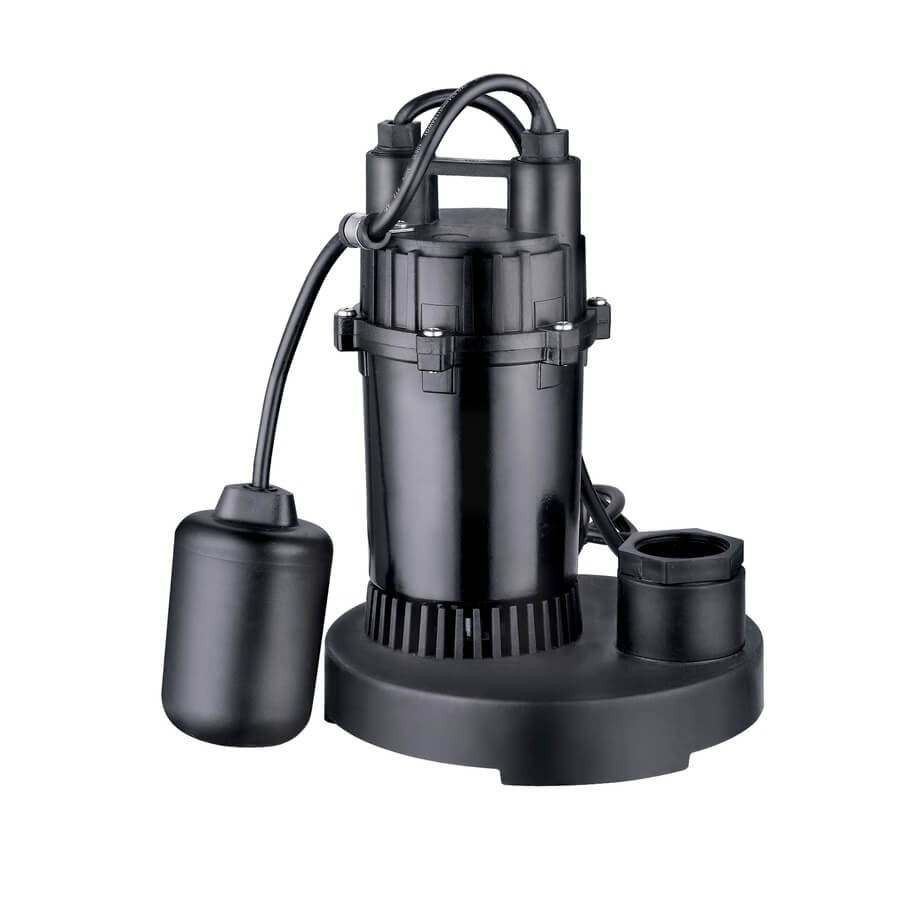The sump pump is an underappreciated hero for many of us. This humble device is usually operating out of sight, but should never be out of mind.
Sump pumps come in a variety of designs and at many price points, but functionally, their purpose is the same:
- the removal of water surrounding the foundation of a building or structure
- preventing water infiltration into the building and reducing or eliminating the presence of interior moisture-related issues such as mould growth.
In many buildings, one or more sump pits are located on the lowest level and are intended to collect water from below and around the foundation. Sump pumps in these sump pits are generally utilized to pump collected water away from the building foundation.

Typically, sump pumps are centrifugal-type pumps controlled by a float level switch. The switch facilitates the energization of the pump when the pit water level reaches a certain level. These pumps are quite simple and generally consist of a motor and shaft connected to an impeller within a volute casing. The rotation of the impeller during pump operation pulls water into the pump inlet and pushes it to the pump outlet. A check valve on the pump outlet prevents the pumped water from flowing back through the outlet piping and re-entering the sump pit.
There are generally two types of sump: submersible, where the pump is located in a waterproof casing and is within the sump (Figure 1), and the pedestal, where the pump motor is not located within the sump (Figure 2).
When the failure of a sump pump occurs, it causes an overflow of the sump pit, resulting in potentially catastrophic water damage and other issues such as mould growth. So how and why do these failures occur? And how can they be avoided?
It is important to understand that, although failure is inevitable, it’s how the failure is managed that will determine the repercussions. This means that an understanding of why and how these devices fail, and an idea of how long they can be expected to operate are critical. A well thought out response to a failure is also essential.
When looking at sump pump failures, the cause(s) of these events can typically be grouped into one or more of the following factors:
- design and manufacturing,
- installation, and
- operation.
Typically, following a sump pump failure, one of the most significant areas of interest is the design and/or manufacturing. To perform analysis of this area, non-destructive and destructive testing is typically completed to establish where a failure occurred and the cause(s). Such causes may include design issues, deterioration or improper installation of components of the electrical or mechanical systems, or wear-and-tear of pump components. Notably, these causes can be interlinked with issues related to installation and operation.
Issues involving the installation and operation of sump pumps are widespread. This may include installation or use deviating from the owner’s manual (such as using a sump pump without a backup pump) or the installation of peripheral components that may damage the sump pump, such as the routing of a water softener system drain hose to the sump pit, which can result in deterioration and failure of sump pumps.
Data from the International Association of Home Inspectors (InterNACHI) estimates that sump pumps have a standard estimated lifetime of seven years. With this in mind, how many of us have one or more sump pumps that have been operating for far longer without any maintenance?
One of the simplest ways to avoid sump pump issues is simply to be aware of the equipment. While it may be easy to see when it is time to replace our jeans or shoes, it’s much harder to know when it’s time to replace a sump pump. In these cases, it’s best to err on the side of caution and prematurely replace the equipment rather than deal with the consequences of a failure.
In addition, the installation of appropriate equipment for the conditions of the sump pit is important. Many sump pumps are not intended for use in sumps containing gravel, or have dimensional requirements for the size of the pit. Ignoring these requirements can result in premature or sudden failure of the equipment.
An additional proactive method to reduce the effects of a sump pump failure at the time of installation is to install a sump pump system equipped with a backup pump. Then, should a failure affect one pump, the backup pump will prevent an overflow. In fact, it is noted that many manufacturers stipulate that sump pumps must be installed with a backup pump. In addition, many manufacturers now offer backup pumps that are battery powered in order to prevent a sump overflow from occurring during a power interruption event, an often-ignored potential cause of water escape events originating from sumps.
There are a multitude of possible issues and contributing factors that can result in sump pump failures and sump overflows. In order to prevent these failures or minimize the impact, these systems should be installed and operated properly, and proactively replaced. In addition, following the occurrence of a failure, a comprehensive examination and analysis should be completed to identify all the contributing factors. For more information or to talk about a claim with one of our experts, please contact the closest CEP office.
